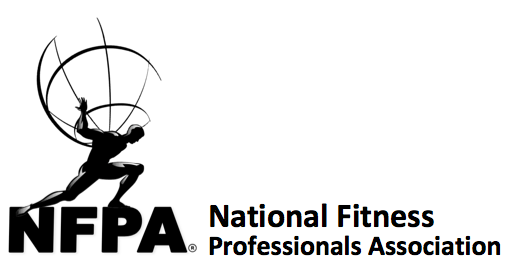exercise after acl surgery:
a path to return to play for competitive athletes
Anterior cruciate ligament (ACL) injuries are one of the most common and debilitating injuries among athletes, especially in sports that involve cutting, pivoting, and sudden directional changes. Surgery to repair or reconstruct the ACL is often necessary for athletes who wish to return to high levels of competition. However, the journey from surgery to a successful return to play (RTP) is complex and requires a well-structured rehabilitation and training program. This article will explore the current research on ACL rehabilitation, focusing on the first 8 weeks post-surgery, which are crucial for setting the foundation for a successful return to sport. We will outline a 4-week initial strength training and running phase, followed by a 4-week transition to play program, and conclude with a summary of considerations.
Current Research on ACL Rehabilitation and Return to Play
The process of returning to competitive play after ACL surgery is influenced by various factors, including the type of graft used in the surgery, the athlete's adherence to rehabilitation protocols, and their psychological readiness. Recent studies emphasize the importance of a criteria-based progression through rehabilitation rather than a time-based approach.
A 2023 study published in The American Journal of Sports Medicine highlighted that a longer rehabilitation period (more than 9 months) significantly reduces the risk of re-injury compared to shorter rehabilitation periods. The research also suggests that strength deficits, particularly in the quadriceps, and asymmetries between the injured and uninjured limbs are common even 6 months post-surgery. Therefore, early-phase rehabilitation should focus on restoring strength, neuromuscular control, and addressing these asymmetries to minimize the risk of re-injury.
Furthermore, psychological factors such as fear of re-injury, confidence, and motivation are increasingly recognized as critical components of a successful return to play. Integrating psychological support and monitoring these factors throughout rehabilitation can enhance outcomes.
Initial 4-Week Strength Training and Running Phase
The first 4 weeks post-surgery are crucial for establishing a solid foundation in strength, mobility, and functional movement. The goals during this phase include reducing swelling, restoring full knee extension, gradually increasing knee flexion, and beginning low-impact strength training.
Week 1-2: Focus on Mobility and Basic Strength
Mobility Exercises:
Passive knee extensions (heel props)
Patellar mobilizations
Ankle pumps and circles
Hamstring and calf stretches
Strength Exercises:
Quadriceps sets (isometric)
Straight leg raises (lying and standing)
Glute bridges
Mini squats (assisted if needed)
Heel raises
Low-Impact Cardiovascular Activity:
Stationary cycling without resistance
Gentle walking with crutches or assistance as needed
Week 3-4: Progressing Strength and Introducing Controlled Running
Strength Exercises:
Step-ups (progress to higher surfaces)
Wall sits
Standing hamstring curls
Resistance band exercises (hip abduction, adduction)
Mobility and Stability:
Continue with passive knee extensions
Introduce balance exercises (e.g., single-leg stance on soft surface)
Running:
Begin with treadmill walking, gradually increase speed to a slow jog
Focus on even weight distribution and symmetrical gait
No sharp turns or lateral movements
4-Week Transition to Play Strength Training and Running Program
The transition phase focuses on increasing strength, power, agility, and sport-specific conditioning. This phase aims to prepare the athlete for the demands of their sport by gradually reintroducing dynamic movements and increasing the intensity of training.
Week 5-6: Building Strength and Introducing Plyometrics
Strength Exercises:
Weighted squats and lunges
Romanian deadlifts
Single-leg squats
Leg press (focus on full range of motion)
Core stability exercises (planks, bird-dogs)
Plyometrics:
Low-impact jumping exercises (double-leg hops, small box jumps)
Focus on soft landings and controlled movements
Running:
Increase jogging distance and introduce interval running
Begin sport-specific running drills (e.g., cone drills, ladder drills)
Continue to monitor for pain, swelling, or instability
Week 7-8: Enhancing Agility and Sport-Specific Skills
Strength Exercises:
Continue previous exercises, increasing resistance as tolerated
Introduce multi-directional lunges and rotational movements
Plyometrics and Agility:
Progress to higher-intensity plyometrics (single-leg hops, bounding)
Incorporate agility drills with cutting, pivoting, and deceleration
Running and Sport-Specific Drills:
Full-speed running with sport-specific patterns (e.g., sprints with directional changes)
Begin non-contact sport drills
Assess readiness for full training by monitoring performance and any symptoms
Conclusion
Returning to play after ACL surgery is a multifaceted process that requires careful planning, progression, and monitoring. Current research highlights the importance of a criteria-based approach, emphasizing strength, symmetry, and psychological readiness. The initial 4 weeks post-surgery are critical for laying a solid foundation in strength and mobility, while the subsequent 4 weeks focus on transitioning to sport-specific activities.
Summary and Considerations
Criteria-Based Progression: Rehabilitation should be based on achieving specific milestones in strength, mobility, and functional performance rather than simply following a timeline.
Strength Asymmetry: Addressing strength imbalances between the injured and uninjured limbs is crucial to reduce the risk of re-injury.
Psychological Readiness: Incorporate psychological support and ensure the athlete feels confident and motivated to return to play.
Gradual Return to Sport: The transition phase should involve a gradual reintroduction to sport-specific activities, with a focus on control, technique, and avoiding high-risk movements until the athlete is fully ready.
By following a structured and well-researched rehabilitation program, athletes can optimize their chances of a successful return to play and minimize the risk of re-injury.

